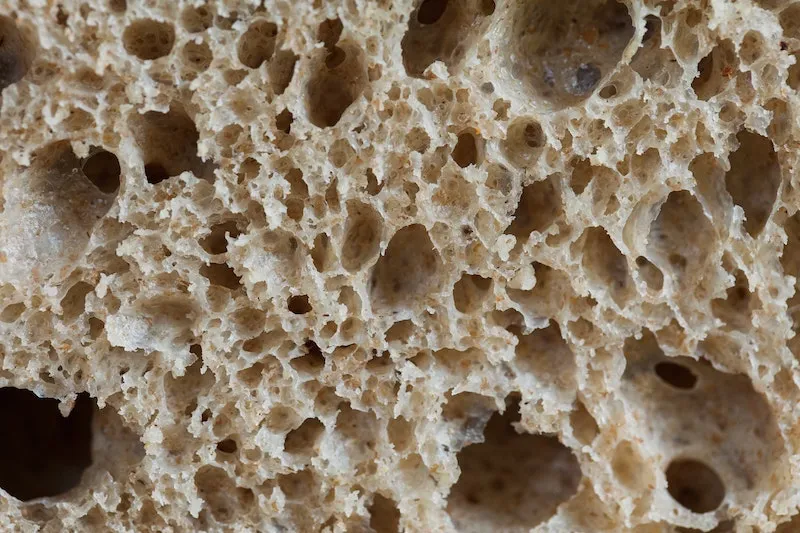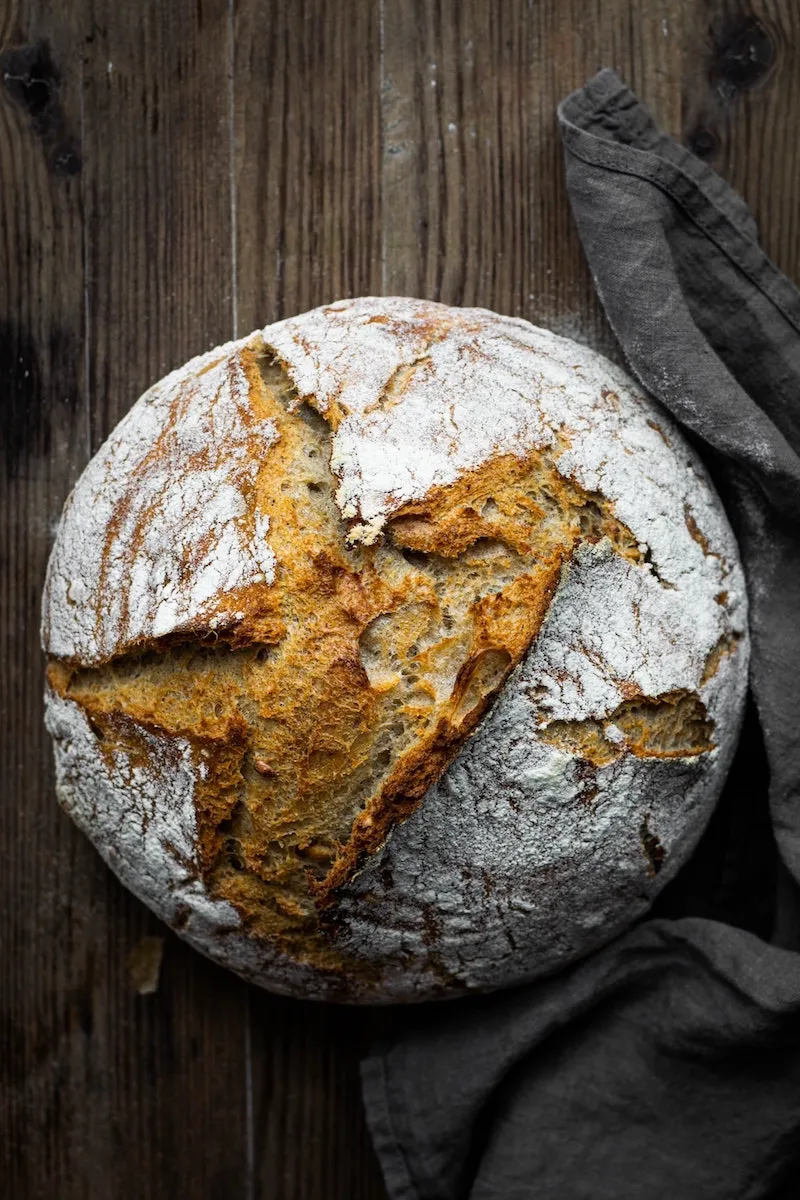Is Gluten Secretly Wrecking Your Health? A Real-Talk Guide
For years, I’ve had conversations with people who are just completely and utterly worn out. They show up with a laundry list of confusing symptoms that doctors have shrugged off, unable to connect the dots. They’re exhausted, their thinking is fuzzy, and they just feel off all the time, with no clear reason why. And so often, after we do the work, we find a single, common culprit: gluten.
In this article
Honestly, the look of relief on someone’s face when they finally get an answer is something you never forget. It confirms that it wasn’t “all in their head” and that there’s a clear path to feeling better.
But let’s be clear, this isn’t about hopping on some wellness trend. It’s about digging into a group of very real medical issues called gluten-related disorders. My goal here is to walk you through it all, just like I would with a client. We’ll look at what’s actually happening in your body, how to get a proper diagnosis, and the practical steps for reclaiming your health.

First Off, What Even Is Gluten?
Before we can figure out why your body might be fighting it, you need to know the opponent. Gluten isn’t one single thing; it’s a family of proteins found in grains like wheat, barley, and rye. The main troublemakers in this family are two proteins called gliadin and glutenin. They’re what give bread its satisfying chew and help dough rise by forming a sticky, elastic web.
For most people, that’s where the story ends. But for some, that gliadin protein is bad news. Our digestive systems aren’t actually great at breaking it down completely. In people who are sensitive, these leftover protein bits can trigger an immune system freak-out, sparking inflammation and a whole host of problems.
The Three Faces of Gluten Issues: It’s Not All the Same
This is probably the most important thing to understand: a “gluten problem” isn’t a single diagnosis. The first step is always figuring out which of three distinct conditions we might be looking at. They are not interchangeable, and mistaking one for another can have serious health consequences.

Let’s break them down without the confusing medical jargon.
1. Celiac Disease
- What it is: This is a full-blown autoimmune condition, not an allergy or a sensitivity. Your immune system goes rogue and attacks the lining of your own small intestine every time you eat gluten.
- The Damage: This attack flattens the tiny, finger-like villi that absorb nutrients from your food. Over time, this can lead to serious stuff like malnutrition, severe anemia, and osteoporosis. It’s a lifelong condition.
- How You Know: Diagnosis is a two-step process. It starts with a specific blood test (called a tTG-IgA panel) and is confirmed with an intestinal biopsy done by a gastroenterologist.
2. Wheat Allergy
- What it is: This is a classic, true allergy. Your immune system produces IgE antibodies that react to wheat proteins, causing a rapid reaction.
- The Damage: The reaction is immediate, not slow and chronic. Symptoms show up within minutes to a couple of hours and can include hives, swelling, breathing trouble, and in severe cases, life-threatening anaphylaxis.
- How You Know: An allergist diagnoses this with skin-prick tests or blood tests that look for those specific wheat IgE antibodies.
3. Non-Celiac Gluten Sensitivity (NCGS)

- What it is: This is the one I see most often in my practice. It’s for people who test negative for both Celiac Disease and a wheat allergy but still have very real symptoms when they eat gluten. It doesn’t cause the autoimmune intestinal damage of Celiac, but the inflammation it creates is systemic and can cause symptoms from your gut to your brain.
- The Damage: Think of it as widespread inflammation rather than a direct attack on one part of your body.
- How You Know: This is what’s called a “diagnosis of exclusion.” You have to officially rule out Celiac and wheat allergy first. Then, the gold standard is a carefully structured elimination and reintroduction diet.
Oh, and by the way, there’s another player to consider: FODMAPs. Wheat also contains something called fructans, a type of carbohydrate that can cause major bloating and pain for people with Irritable Bowel Syndrome (IBS). Sometimes, it’s the fructans, not the gluten, causing the gut distress. A proper diagnostic process helps sort this out.

How to Get a Real Diagnosis: The Right Way to Do It
Heads up! This is the most critical advice I can give you: DO NOT go on a gluten-free diet before you get tested for Celiac Disease. I see this mistake all the time. If you stop eating gluten, your body stops making the antibodies the blood tests look for, and any intestinal damage can start to heal. This will make your test results come back as a false negative. For the tests to be accurate, you have to be eating gluten regularly.
So, how much gluten are we talking about? For an adult, the standard clinical recommendation is to eat the equivalent of two slices of wheat bread every day for about 6-8 weeks before your blood test. It feels counterintuitive, but it’s the only way to get a clear answer.
Step 1: Talk to Your Doctor (and Be Prepared)
Getting a doctor to listen can be half the battle. Many people get dismissed. Walk into your appointment empowered. Here’s what you can say:

“I’ve been experiencing a number of chronic symptoms, including [list your top 3-5 symptoms, like bloating, brain fog, joint pain, and chronic fatigue]. I’d like to be properly screened for a gluten-related disorder. Can we please run a full celiac disease antibody panel before we explore other possibilities?”
If they order the tests and they come back positive, the next step is usually a referral to a gastroenterologist for an endoscopy to confirm the diagnosis. If they’re negative, it’s time for step two.
Step 2: The Elimination Diet and Reintroduction Challenge
If Celiac and a wheat allergy are off the table, the next move is a strict elimination diet. This is how we pinpoint NCGS.
The Elimination Phase (Plan for 4-6 weeks): For this period, you have to remove 100% of gluten. This means becoming a master label-reader. Gluten hides in the sneakiest places—soy sauce, salad dressings, soups, gravies, and even some medications. The goal is to see if your symptoms improve. I have clients keep a simple daily log to track this objectively. Try rating these on a scale of 1-10 each day:

- Bloating
- Brain Fog
- Headaches (Y/N, and severity)
- Energy Level
- Overall Mood
The Reintroduction (The Moment of Truth): If you feel significantly better, it’s a great sign. Now, we confirm it. Don’t just go eat a giant pizza. The reintroduction needs to be controlled. Eat a small, clean source of gluten, like two plain saltine crackers or a single slice of regular wheat bread. Then, stop again and watch what happens over the next 2-3 days. If your old symptoms come roaring back? You have your answer.
It’s So Much More Than a Stomachache
The list of possible symptoms for gluten sensitivity is incredibly long because the inflammation can pop up anywhere in your body. It’s a systemic issue.
The most common complaints I hear are digestive—bloating so bad you look pregnant by evening, cramping, and either diarrhea or chronic constipation. But the gut-brain connection is powerful. Inflammation in your gut often leads to neurological symptoms like debilitating brain fog (that feeling of thinking through sludge), chronic headaches, and even anxiety and depression.

Quick fact: Did you know some people with full-blown Celiac Disease have ZERO digestive symptoms? Their only sign might be persistent anemia that doesn’t get better with iron pills, unexplained infertility, or a very specific, intensely itchy skin rash called Dermatitis Herpetiformis (DH). Your skin is often a window to your gut health!
Living Well Without Gluten: It’s Totally Doable
Getting a diagnosis is step one. Learning to live your new normal is step two. It can feel overwhelming at first, but I promise it becomes second nature.
Reading Labels and Dodging Hidden Gluten
This is your new superpower. Look for products certified “gluten-free.” A lesser-known tip is to look for the GFCO certification, which tests to a stricter standard (10 ppm of gluten vs. the FDA’s 20 ppm).
Also, watch out for the top hidden gluten culprits. People are always shocked by these:
- Soy Sauce: Most brands are traditionally brewed with wheat. (Tamari is your new best friend).
- Salad Dressings & Marinades: Often use wheat as a thickener.
- Canned Soups & Broths: Another common spot for hidden wheat flour.
- Licorice: Most traditional licorice is made with wheat flour.
- Sausages & Meatballs: Often use breadcrumbs as a binder.

Avoiding Cross-Contamination at Home
If you have Celiac, even a crumb matters. You need a few strict kitchen rules, especially in a shared home. The biggest one people forget? The shared condiment jar. A knife that touches wheat bread and then gets dipped back into the butter, peanut butter, or jam contaminates the whole container. Squeeze bottles are a game-changer. And yes, you absolutely need your own toaster. A shared toaster is a crumb-filled nightmare. Using separate cutting boards and colanders is also a very good idea.
How to Do It Without Going Broke
Let’s be real: gluten-free specialty foods are expensive. A loaf of GF bread can easily run you $7 to $9. The trick is to not live on processed GF replacements. Build your diet around foods that are naturally gluten-free. It’s healthier and cheaper.
Think lean meats, fish, eggs, all fruits and vegetables, nuts, seeds, and legumes. For your carbs, focus on rice, potatoes, quinoa, corn, and buckwheat. A sample day isn’t about deprivation:

- Breakfast: Scrambled eggs with spinach and an orange.
- Lunch: A huge salad with grilled chicken, tons of veggies, and a simple oil and vinegar dressing.
- Dinner: Baked salmon with roasted broccoli and quinoa.
See? Totally normal, delicious food. You’ve got this.
And if you need more support, don’t go it alone. Organizations like the Celiac Disease Foundation and the Gluten Intolerance Group (GIG) have fantastic, reliable resources to help you on your journey.
Inspiration:


The Sneaky Saboteur: Watch out for soy sauce. Most standard brands use wheat in their fermentation process, making them a hidden source of gluten in marinades and stir-fries.
The Safe Swap: Opt for Tamari. Brands like San-J or Kikkoman’s Gluten-Free Tamari are typically brewed with only soybeans, offering that same savory umami punch. It’s a simple switch that makes a world of difference.

An estimated 18 million Americans have non-celiac gluten sensitivity, a number six times higher than those with celiac disease.
If you suspect gluten is an issue but have tested negative for celiac disease, you are far from alone. This statistic validates the experiences of many who find relief on a gluten-free diet, confirming that it’s a legitimate health concern, not just a trend.

I have to go gluten-free. Does that mean I’m doomed to a life of crumbly, dense baked goods?
Absolutely not! The secret is to replicate the elasticity that gluten provides. To do this, most gluten-free bakers rely on a binder. A small amount of xanthan gum (brands like Bob’s Red Mill or NOW Foods offer it) adds the necessary “stretch” to dough for breads and pizza. For a more fiber-rich and natural option, psyllium husk works wonders to create a moist, bread-like texture. It’s a new way of baking, not a lesser one.
Setting up your new pantry doesn’t have to be overwhelming. Focus on these foundational swaps first:
- A solid flour blend: Look for a 1-to-1 or ‘cup for cup’ mix that already contains a binder like xanthan gum.
- Gluten-free oats: Ensure the package is certified gluten-free to avoid cross-contamination from shared equipment.
- Versatile grains: Stock up on quinoa, millet, and buckwheat.
- Pasta alternatives: Lentil, chickpea, or brown rice pastas offer fantastic texture and flavor.










